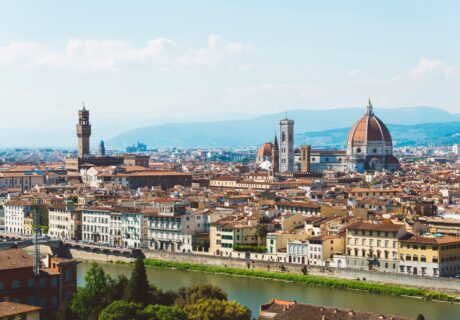The most beautiful villages in Sicily
5 min · 3 Oct 2023

One of Sicily’s most precious treasures are its many charming villages. The custodians of ancient traditions that have been handed down over the centuries, linked to history, culture but also food and wine, they are small jewels, often perched on a mountain or overlooking an extreme stretch of coastline, allowing visitors to fully immerse themselves in the region’s most authentic atmosphere.
Which are the most beautiful villages in Sicily? We have chosen five that we recommend everyone visit at least once in their life.
Erice
Among the most beautiful villages in Sicily, we could not fail to include Erice (province of Trapani). This is a fascinating walled medieval village with a ‘mountain’ charm made even more irresistible by the extreme variability of the weather. Perched atop the mountain of the same name (a good 750 metres above sea level), it dominates the entire Trapani valley from above, offering unique views and unforgettable sunsets. The village’s most representative building is the Duomo, a golden mirage in light sculpted stone and Carrara marble. Built in the first half of the 14th century, it houses works of great value. In addition to the Cathedral, the following are also worth a visit: the Castle of Venus, built between the 12th and 13th centuries on the ruins of the ancient temple of Venus Ericina; the Antonino Cordici Museum, which traces the history of Erice; and the Church of San Martino, possibly of Norman origin and rebuilt in the late 17th century.
Salemi
Also in the province of Trapani is the picturesque village of Salemi. It stands on a hill, amidst the vineyards and olive groves of the Belice Valley, and is a veritable open-air museum, rich in buildings made from the local bell-stone and churches (about 25). The historical centre, of Roman-Byzantine origin, still has its medieval layout. The town developed around the Norman Castle built by Frederick II of Swabia in the 13th century. The castle is part of the Salemi Museum System, which brings together the civic museums (Sacred Art, Archaeology, Risorgimento, Museum of the Mafia and Workshop of Legality, Ecomuseum of Wheat and Bread) and the archaeological areas of Mokarta, Monte Polizo and San Miceli. Among the many religious buildings, the Duomo stands out, where you can admire a baptismal font by Domenico Gagini and a valuable 17th-century processional cross.
Sambuca di Sicilia
Perched on a hill (350 metres above sea level) in the middle of the Belice Valley, Sambuca di Sicilia (province of Agrigento) is a splendid village of Arab origins that encapsulates the soul of the region. The town’s urban development follows two lines: the Arab ‘inside the walls’ and the 17th-17th century ‘outside the walls’. The historic centre is dominated by the majestic Mother Church, unfortunately closed for worship because it was severely damaged in the earthquake of 1968. Sights include: the 17th-century Church of the Carmine, the village’s main religious building, which houses a splendid marble statue of the Madonna dell’Udienza; the Church of Santa Caterina d’Alessandria, with its opulent decorative apparatus; the Palazzo Panitteri Archaeological Museum, which houses finds discovered in the surrounding area; and the Belvedere Terrace, from which one can enjoy a magnificent view.
Sutera
Sutera (province of Caltanissetta) is a charming village that encompasses beauty, art and … legends. It develops around the chalky cliff of Mount San Paolino and is called the ‘balcony of Sicily’ because it offers a marvellous panorama that stretches from Mount Etna to the Gulf of Agrigento. The urban centre, with a medieval layout, consists of three quarters: the Rabato (founded by the Arabs around 860 AD), the Rabatello and the Giardinello. The heart of the village is Piazza Sant’Agata, overlooked by the 19th-century Town Hall and the 15th-century church of the same name. Worth a visit are: the Sanctuary of San Paolino, which houses two reliquary urns, the highest expressions of ancient Sicilian goldsmithing; the ‘rocca spaccata or jacca – cleft rock’, a small hill where the rock is separated in two by a gap (which, according to legend, was formed when Jesus died on the cross); and the Ethnoanthropological Museum.
Petralia Soprana
Another village not to be missed is Petralia Soprana (province of Palermo). Located in the heart of the Madonie Park, almost 1,150 metres above sea level, it is the highest municipality in the Palermo area and one of the best-preserved towns in central-northern Sicily, with its rough stone houses and wrought-iron balconies adorned with geraniums. The origins of Petralia Soprana are very old and some scholars date them back to Greek domination. Although it is a small town, it has a large number of churches, including the Church of Santa Maria di Loreto, inside which you can admire a splendid altarpiece by Giandomenico Gagini; and the Church of the Holy Apostles Peter and Paul, which has an elegant 18th-century portico. Not to be missed is the remarkable panorama from the Church of Santa Maria di Loreto, which includes in its view Mount Etna and, clockwise, Enna, Caltanissetta and the Imera river valley.








